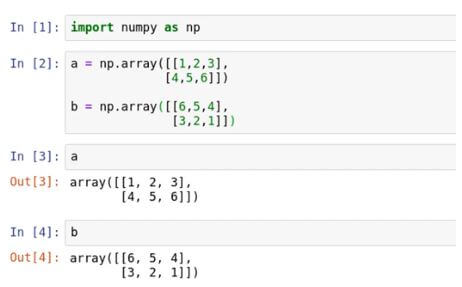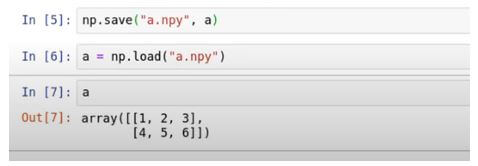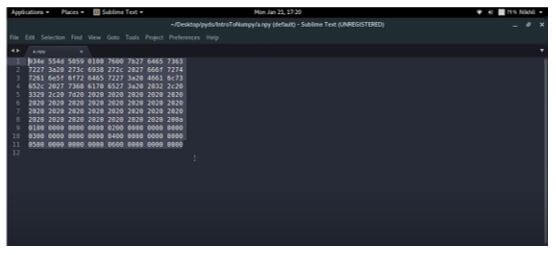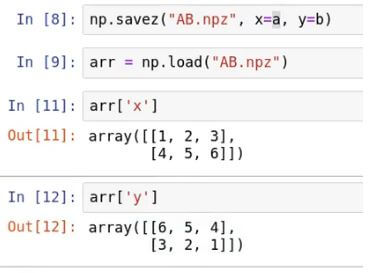Updated March 28, 2023

Introduction to numpy.save()
numpy.save() function is used in the Python coding language to save a separate array which is storing a set of data in npy format to ensure that the data is stored in a file located in the hard disk, which can be loaded as per functions needed. The dot npy format is the standardized format, a binary file saving method used to save a single array on the disk. The format is responsible for storing all the dtype or data type information along with the shape of the array necessary for the reconstruction of the array on the same and different machines, which may or may not have a similar architectural structure.
The format is designed keeping simplicity and approachability in mind at the same time delivering all the goals. The .npz format is used for storing persisting multiple data in the disk space. This can be easily understood as a zip file containing a number of .npy files representing a single array each.
Syntax and Parameters
Following is the syntax which is used to utilize the numpy.save() while writing codes in the Python programming language:
numpy.save * (file, * arr, allow * _ * pickle * = * True, * fix * _ * imports * = * True *)Following is the parameters used for the numpy.save() function written in the Python programming language:
1. * file, * str, * or pathlib. * Path
- It represents the file or the file name which is used to register and save the data. The file name remains unchanged is the file is an object.
- A dot npy extension gets added to the name of the file in case it contains string data or a path, incase such an extension does not already exist.
2. * arrarray_like
It represents the data containing an array that needs to be saved.
3. * allow_picklebool, optional
- The parameter is used to allow the option of saving various object arrays using the Python pickles. Hey, there are various reasons for not allowing Pickles, including security-related issues (arbitrary codes can be executed due to loading of data that has been pickled) and portability-related issues (objects that have been pickled might not be loadable the various Python installations.
- For instance, there might be incompatibility issues due to the data being stored as objects that have been pickled. This is especially experience when a transition is between Python 3 and Python 2. Therefore, the default value of the parameter is set as true unless specified.
4. fix * _ * importsbool, * * optional
- This parameter turns out to be useful only when objects that are contained in object arrays in the Python 3 platform have to be pickled in a comparatively compatible manner within Python 2 environment.
- If the parameter is true, the pickle tries to map in the new names created in the Python 3 environment to the previously existing module names that had been used in Python 2, which makes the pickled data stream created to be readable in the Python 2 environment.
Returns:The parameter is responsible for storing the data that has been input by the user inside the disk file, which has the dot npy extension.
How does numpy.save() work Systemically?
Let us see the functioning of the numpy save function with the help of an example. So here we have two arrays, A and B, respectively.
Now let us assume that we want to save the error in the project folder. We can observe that an a.npy file has been created. This file consists of the numpy array data in a systemic generator data in binary format. For opening such kind of file default program to open the file has to be changed. A text reader needs to be used in order for the file to be opened. Here, we are using the sublime text editor and reader program for opening the file, and we can see that the data has been presented in a compressed synchronized manner. This compact manner of data is stored in the file representing the disk areas where the file has been stored.
Now suppose taking ahead of the same example, let’s say we want to say both the arrays a and b. Weather news, the command savez() in order to designate npz extension zip file which contains both the arrays A and B in binary forms. Here we also have the provision to specify that the name of the file containing array a will be x, and the name of the file containing array b would be y. Again, to check if the saving function has been accomplished in a successful manner, we have to try to load the saved files. For ensuring that it, we have to write the code.
When we apply the load function for calling the file that has been saved and trying to check if the elements of each of the array contained within the specified folder happen to follow the correct sequence and are readable, we can ensure that it the saving function is successful.
Examples of numpy.save() in Python
Given below are the examples of displaying the use of numpy.save() in Python:
Example #1
Python program explaining the use of numpy.save function.
Code:
import numpy as n1
# the array that has to be loaded is entered within b1
b1 = n1.load('num1file.npy')
print("The values contained is b1 are as follows:")
print(b1)
# b1 is then now printed using the file num1file.npy
print("The file b1 is printed from num1file.npy")The output of the above code displaying the use of argmax:
Example #2
A program is written using the python language, which is used to illustrate the function save().
Code:
# save() function
import numpy as n1
a1 = n1.arange(5)
# printing the array a1.
print("Values contained in the array entered are:")
print(a1)
# the array has been saved in the file named numfile.npy
n1.save('numfile', a1)
print("The array has been now saved in the file numfile.npy")The output of the above code displaying the use of argmax:
Conclusion
The numpy.save() function is really essential to ensure that arrays that are critical to certain codes or might be used in dynamic programming by various codes can be stored at a common place from where loading and reusing the file will be easy even when the transit consists of inter-machine transfer.
Recommended Articles
This is a guide to numpy.save(). Here we discuss the introduction, how does numpy.save() work systemically? Along with examples. You may also have a look at the following articles to learn more –







